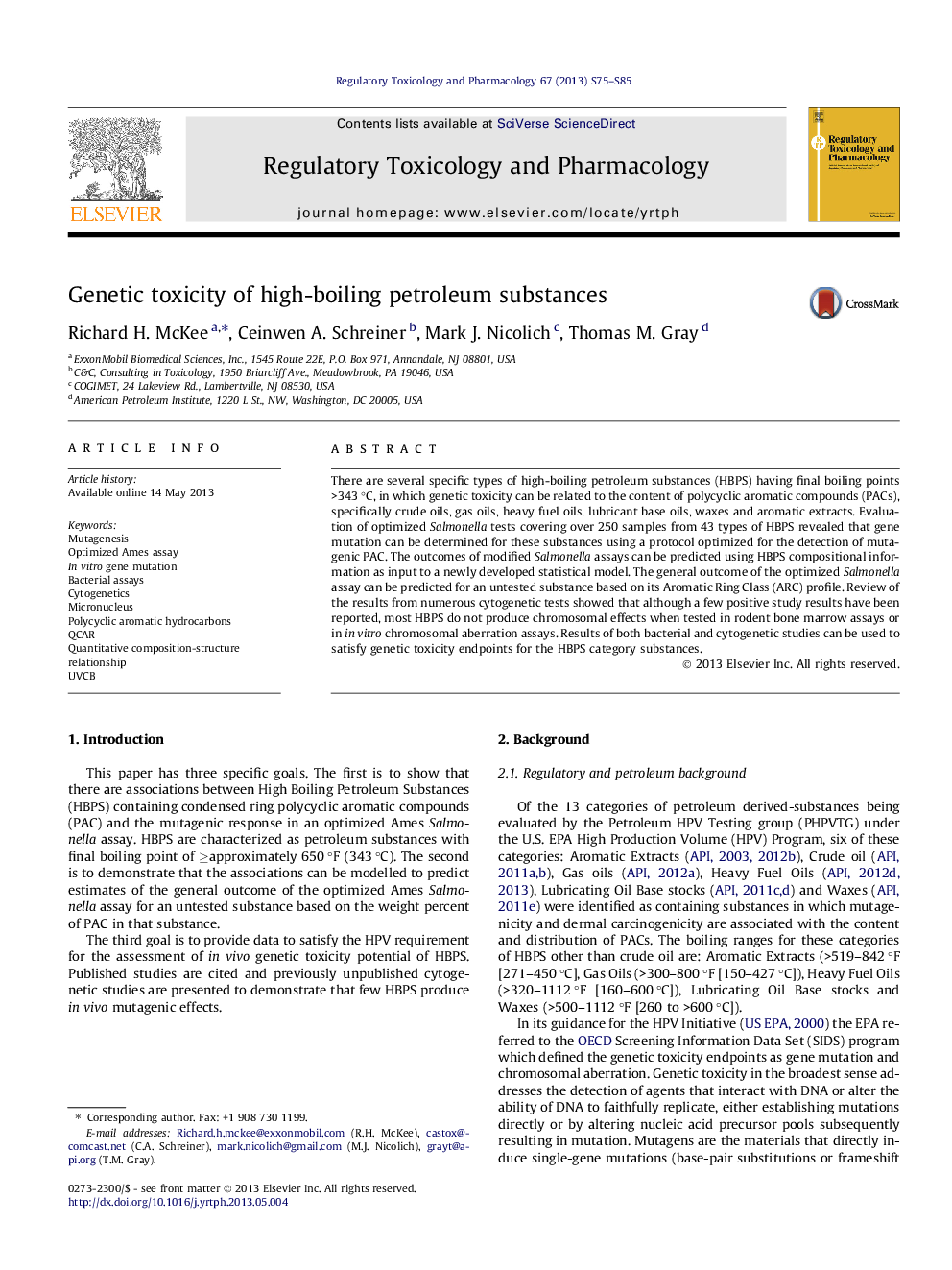| کد مقاله | کد نشریه | سال انتشار | مقاله انگلیسی | نسخه تمام متن |
|---|---|---|---|---|
| 2592314 | 1132002 | 2013 | 11 صفحه PDF | دانلود رایگان |

• Aromatic Ring Class profile predicts general outcome of optimized Salmonella assay.
• Provides statistical model to predict general outcome of optimized Salmonella assay.
• Model shows 99% accuracy on development data and 94% accuracy on corroboration data.
• HBPS generally do not induce cytogenetic damage in vivo or in vitro.
• No relationship between optimized Salmonella test and cytogenetic results.
There are several specific types of high-boiling petroleum substances (HBPS) having final boiling points >343 °C), in which genetic toxicity can be related to the content of polycyclic aromatic compounds (PACs), specifically crude oils, gas oils, heavy fuel oils, lubricant base oils, waxes and aromatic extracts. Evaluation of optimized Salmonella tests covering over 250 samples from 43 types of HBPS revealed that gene mutation can be determined for these substances using a protocol optimized for the detection of mutagenic PAC. The outcomes of modified Salmonella assays can be predicted using HBPS compositional information as input to a newly developed statistical model. The general outcome of the optimized Salmonella assay can be predicted for an untested substance based on its Aromatic Ring Class (ARC) profile. Review of the results from numerous cytogenetic tests showed that although a few positive study results have been reported, most HBPS do not produce chromosomal effects when tested in rodent bone marrow assays or in in vitro chromosomal aberration assays. Results of both bacterial and cytogenetic studies can be used to satisfy genetic toxicity endpoints for the HBPS category substances.
Journal: Regulatory Toxicology and Pharmacology - Volume 67, Issue 2, Supplement, 1 November 2013, Pages S75–S85